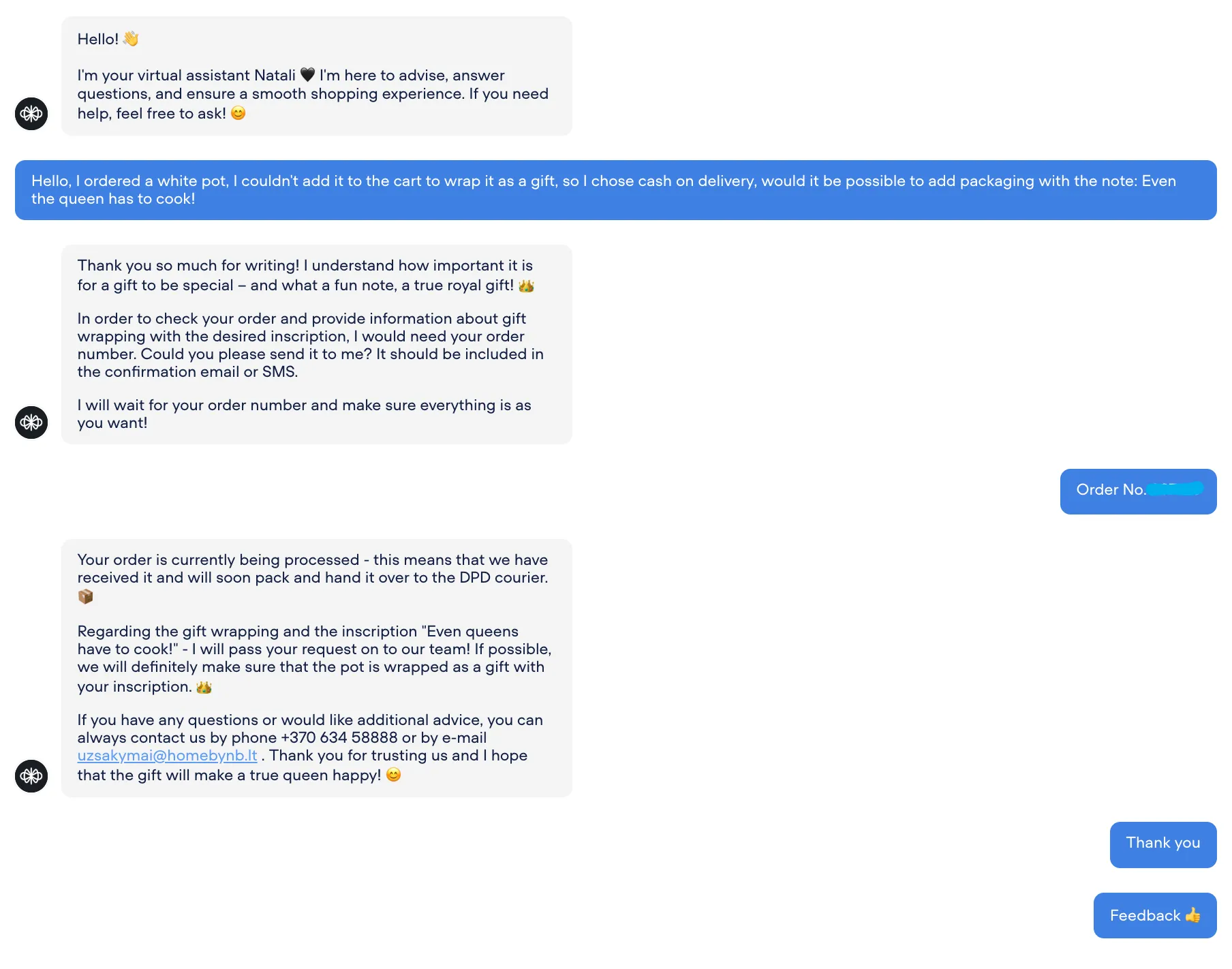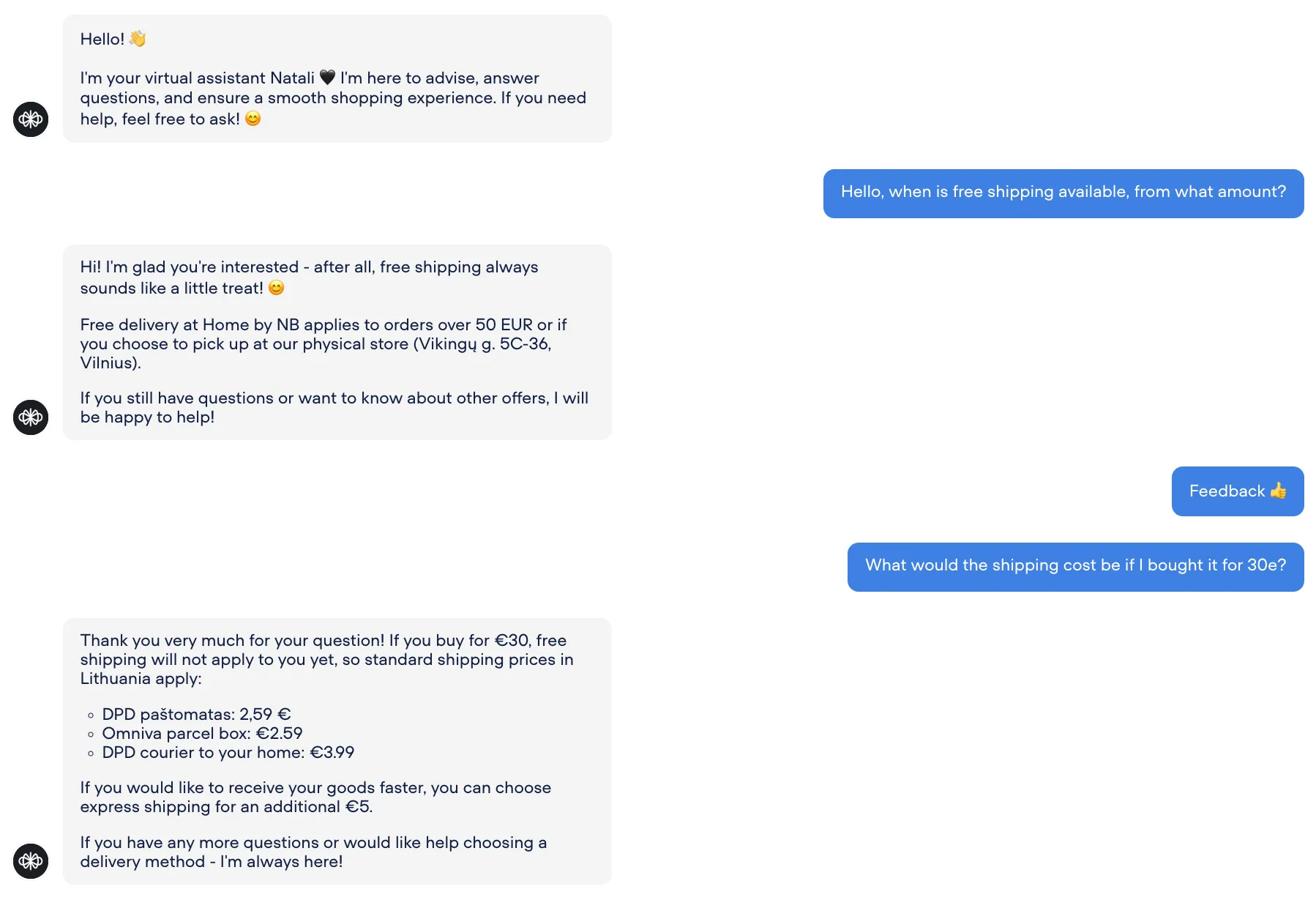Customer Service
AI Chatbot
E-commerce
While Customer Support as a whole is very important, and behind each question, there is a client or a potential client, some questions do suck. You might have a very talented and empathetic team of support agents, but they are stuck on a soul-crushing hamster wheel of repetitive work.
Most of these repetitive questions can be attributed to Where is my order? (WISMO) inquiries, for example, “What’s your return policy?”, “Do you ship to my country?”, “Where is my order?”, etc.
Parnidia has calculated that over the past 3 months, their eCommerce clients have received on average 26% of questions related to tracking orders and inquiring about shipment policies.
This article will cover all 3 stages of tackling and automating these repetitive inquiries, which would result in human agents contributing to high-value tasks that build loyalty, instead of copy-pasting tracking numbers. This is what Parnidia believes in and why it exists.
1st line of defense that most companies think will work is building and preparing canned responses and templates. This strategy can significantly reduce response time from two minutes to thirty seconds, if the template is well-written.
Here are some templates provided by Zendesk:
- Thanks for contacting [Company Name] support team about order #[number]. I understand you need to make changes to your order. Would you like to cancel your order, update the shipping address, or add additional items?
- Hi, [Customer Name]. I’m happy to help you return or exchange [product]. Our return and exchange policy is available at [link to return policy]. Can you tell me more about the item you’d like to return or exchange and the reason for return?
While these templates look great, sound professional, and can reduce response time, they still require a human agent to read the inquiry, look for a correct template, and send it out. This can result in a large “human-in-the-loop” bottleneck if a company is receiving hundreds of such tickets per day.
Besides that, this solution is only temporary and is not scalable. As company grows and receives an increased number of different inquiries, more templates will need to be written. This puts a burden on the management to either write new templates or manage the process.
2nd stage of tackling redundant questions is having an FAQ page or a knowledge base. This is a crucial asset, as FAQ pages that are rich in information can deflect a significant number of tickets.
While most companies have at least a small section dedicated to Frequently Asked Questions, most of the time it is not updated, filled with outdated information, contains a broad answer to a problem, or lacks information altogether.
On the contrary, a business can have a very detailed FAQ section, rich with information and solutions. Only problem is that only a fraction of customers would go to the FAQ section before trying to contact support. Changes in customer behaviour make FAQ sections a sweet addition to the website, but not a solution to the inbox problem.
Another option would be to set up a basic helpdesk run by an “if-else” workflow. It would be able to understand customer’s intent by identifying words like “order tracking” and send a corresponding auto-reply.
On paper this sounds great, although inquires like “I want to know where is my package” without specific keywords would break the workflow and a human would need to step in once again.
3rd stage of addressing repetitive inquiries is to let AI tackle them entirely. With AI’s ability to understand the true intent rather than looking for specific keywords, ultimate solution is reached.
For example, Parnidia’s AI assistant understand that questions like “Where is my stuff?”, “Has this shipped yet?”, and “Can i get a shipping update?” all fall under a same Where Is My Order category.
Once intent is identified, AI assistant does not just send a template, but it resolves the ticket completely. It has the ability to reach the back end of the store, retrieve real-time tracking information, and send a detailed and personalized response. As for returns, it can provide next steps to complete the return.
Check out Home By NB store’s assistant Natali AI in action. Take note, that customers loved the information presented by assistant and gave positive feedback.


A good start is seeing and acknowledging that the business is overflowing with repetitive questions or is sailing to this direction. While implementing above mentioned tactics from the 1st stage and the 2nd stage might help in the short time, it still keeps humans in the loop.
When it comes to 3rd stage, Parnidia’s goal is not to just answer tickets faster, it is to completely automate the process and shift human agents to more significant tasks in the company and create more value.
It is important to remember that each ticket, which is handled by a human agent has a direct operational cost. Automating these repetitive inquiries not only frees up the team, but it transforms support center into a scalebale growth engine.
Curious how many of your tickets can be automated? Sign up for a free, confidential analysis of your historical support data. We will show you the exact percentage of inquiries Parnidia would have resolved automatically during previous month.
Smarter support starts with a call.
Get in Touch